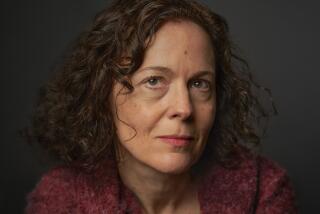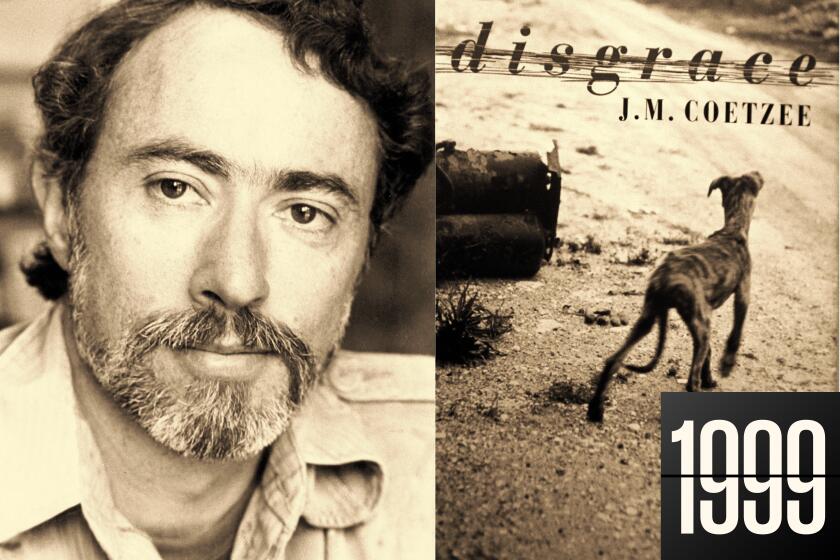The moral of the story
IMAGINE fiction as a place -- a small, close wooden room with a kneeler and a screen. Imagine the writer entering that room and telling her stories to a man behind the screen. Then she gets up and leaves. Sometimes she feels better, lighter. Sometimes she feels false, as if it were all too easy, as if making literature out of people, problems and regrets were a kind of sin. Instead of being a way to find the truth, telling stories is just another form of lying.
“The Stories of Mary Gordon” exists somewhere in this middle territory between truth and invention, fiction and sin. Gathering 41 short stories -- 22 of them spanking new and 19 from previous collections -- it is a career-spanning effort, one that reflects its writer’s life. The author of 8 works of fiction, three books of essays and nonfiction and one short biography of Joan of Arc, Gordon was born in Far Rockaway, N.Y., in 1949 and educated by nuns for 12 years. She lived, after her beloved father died when she was 7, with her mother, an aging aunt and her grandmother. Her first novel, “Final Payments,” has sold well over 1 million copies. She teaches at Barnard College -- women’s literature and creative writing classes in which she helps women find their true voice.
Gordon’s work is full of guilt, since, like a lot of authors, she survives by writing. In some of these stories -- many of which are written in the first person -- you can feel her hiding behind her narrators, who dance up close to life’s harsh edges with a kind of bravado. One confesses that when she and her daughter were caught in a riptide, she tried to save only herself. Another is haunted by a man who loved her even though she treated him cruelly. Such characters step into their power, their self-preservation, as if it makes them invincible, but only for a moment -- after which they are haunted, hunted and tracked down by their past.
Most of the people in this book are in need of cleansing, healing and forgiveness -- which brings us back to the confessional. Even the most pious spinsters (of whom there are an alarming number) and goody-two-shoes are train wrecks waiting to happen. When Gordon’s characters say, “I am very happy here,” it almost always sounds wooden and rings with foreboding.
This is not meant to be off-putting. There’s plenty of Disney out there, plenty of happy endings. The characters here (mothers, wives, women who were raised not to like sex) suffer a kind of wild happiness when they break away from the world’s expectations, but it is a fugitive happiness, ecstatic and deadly, like Thelma and Louise’s great escape. More often than not, they are punished for it. And still, no question, it was worth it.
“I think I write about life as it is,” claims the narrator of “Storytelling,” one of many stories that could be used to teach a writing class. These pieces are wonderful, interspersed as they are throughout the collection, because they lend insight into Gordon’s sometimes diabolical modus operandi. At the same time, they have a way of coming between the reader and the narrative. It’s as if Gordon, after all her years of teaching, can’t resist confessing to her readers the many ways in which she creates fiction from her life.
In “Vision,” the narrator hears a story, told lightly at a social gathering, notices where it rings false and, in an effort to get at the truth, teases it out in a story of her own. “A Writing Lesson,” meanwhile, doggedly delineates the differences between fairy tale and fiction, revealing, among other things, that the center of fiction, unlike fairy tales, is “the avoidance of action.” And in “I Need to Tell Three Stories and to Speak of Love and Death,” Gordon reveals how little she really knows about the whole endeavor. “You must believe me,” she writes in this piece inspired by her father, that she had no idea what connected three stories in her life until she sat down to write.
What she does not reveal here -- in part because she explored it in her 1996 memoir “The Shadow Man” -- is that the pure love of her father, the love that “shines always on the horizon of who I am,” was the love of a liar, a man who grew up in Lithuania, who dropped out of high school and did not go to Harvard as he claimed, who was blatantly anti-Semitic (although himself a Jew who converted to Catholicism) and who published a soft porn magazine. “I do not want to turn my father into literature,” she writes. “So I talk about him rarely, when I’m sure that what I’m saying is something simple, something I have not gone over and over in my mind.” This reluctance to make her father into some kind of fictional creation tells us a great deal about Gordon’s motivations and desires. Fiction often asks a writer to draw conclusions and make judgments (many of them moral) about her characters. And yet these stories are much more powerful when she refrains and lets her readers make judgments of their own.
When the moral of a story seems truly clear, the result is a sort of unfinished quality, as if Gordon had not scraped away enough layers to get at the true complexity underneath. “Violation,” in which the narrator is raped by a sailor in a foreign town and molested as a child by her uncle, perpetuates the lie and protects the man in both cases. Gordon doesn’t have to say a word or control the reader’s sadness, empathy and revulsion at the narrator’s complicity. In “Safe,” a young woman learns the vulnerability of marriage and motherhood, as played by someone barely strong enough to deflect the onslaughts of the world. There is little question that these are good and virtuous roles, institutions to be guarded with the full force of our morality and will. “There is something satisfying about marriage at this time,” Gordon writes. “It is the satisfaction of a dying civilization: one perfects the form, knowing it has the thrill of doom upon it. There is a craftsmanship here; I am conscious of a kind of labor. It is harder than art and more dangerous.”
Often, Gordon begins a story with “I want,” “I need” or some other directive, like a child saying, “Look over here!” “You must be sure that the reader can only interpret the story as you would have it interpreted,” she commands in “A Writing Lesson.” Of course, Gordon knows that such control is a gift to the reader: a form, a container. Like a lover who organizes your vacation for you because he knows how tired you are of making decisions, Gordon throws an enormous amount of material and detail at her readers, none of it superfluous. She is a writer who tells at least as much as she shows. With breathtaking succinctness, she can sum up a lifetime dilemma -- a character trapped between her past and present.
Gordon’s stories do not spill out on the page. But there is a point in each where the writer opens her fist to let the story fly out. This is where they become voluptuous. Like Iris Murdoch, in many ways her companera in style and tone, Gordon considers fiction a form of “high gossip.” And yet, it is the saving grace, a temporary way station between past and present, heaven and hell, truth and lies. “I am doing this because I am dying,” one narrator says of her endless, repetitive housecleaning, “so that I will not die.” I think writing is, for Mary Gordon, something like this. It is the little room in which we tell our stories and someone, somewhere, listens. *
More to Read
Sign up for our Book Club newsletter
Get the latest news, events and more from the Los Angeles Times Book Club, and help us get L.A. reading and talking.
You may occasionally receive promotional content from the Los Angeles Times.





